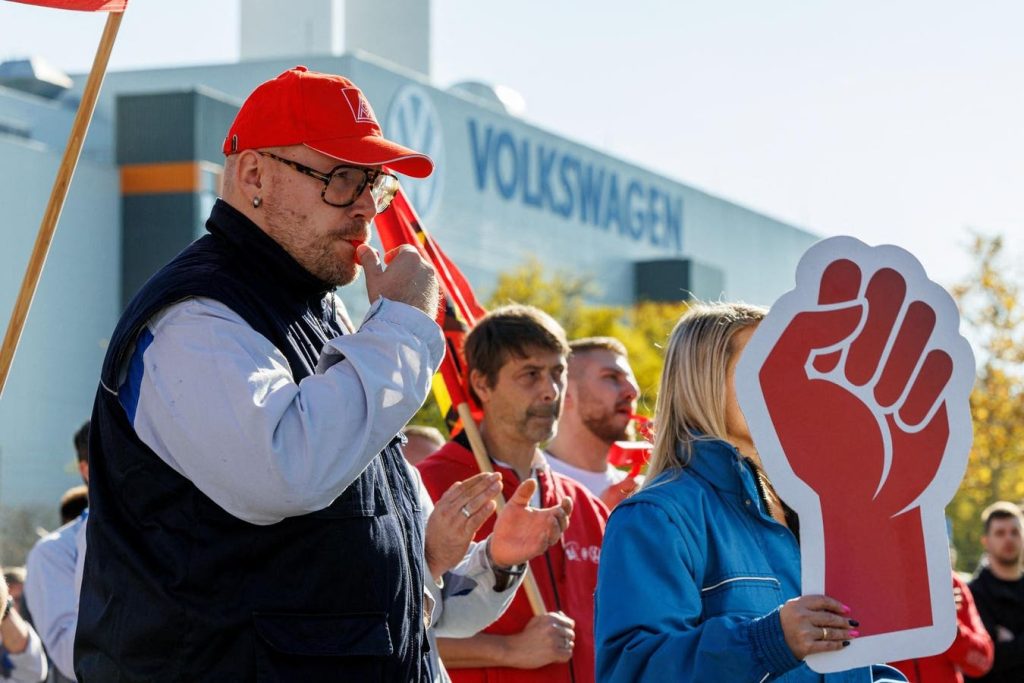Volkswagen’s ambitious restructuring plan, aimed at streamlining its operations and boosting profitability, has yielded a negotiated settlement with its powerful labor unions, a result that has been met with mixed reactions. While avoiding immediate factory closures and layoffs, the agreement raises questions about the automaker’s ability to truly transform its worker-centric culture and address its underlying inefficiencies. This outcome underscores the enduring influence of unions within Volkswagen’s governance structure, a dynamic that has historically deterred some investors wary of the company’s prioritization of employee interests over shareholder returns.
The restructuring plan, prompted by declining market performance, particularly in China and the EV sector, and lagging profitability within its core VW brand, initially targeted the closure of three German factories. This bold proposal signaled a potential shift in the company’s traditional approach, hinting at a willingness to prioritize shareholder value. However, the final agreement, hailed as a “Christmas miracle” by union leaders, preserves job security until 2030 and maintains operations at all 10 German factories. While Volkswagen announced over 35,000 job reductions and a capacity cut exceeding 700,000 vehicles, these reductions will be achieved through attrition and early retirement, avoiding forced layoffs and preserving the core workforce.
The muted response from investors reflects skepticism about the efficacy of the agreement in achieving the desired cost savings and operational improvements. While a slight uptick in Volkswagen’s share price preceded the announcement, investor sentiment remains cautious, with many demanding further details regarding the projected €15 billion in efficiency gains. Analysts question the company’s ability to achieve these targets without resorting to more drastic measures like factory closures, suggesting that the current plan may not adequately address the scale of the challenges facing the automaker. The focus on plant “compacting” rather than outright closures raises concerns about the long-term viability of maintaining numerous sub-scale facilities.
The negotiated settlement highlights the significant power wielded by German labor unions, particularly within Volkswagen’s unique corporate structure. With half the seats on the supervisory board and the backing of politicians in Lower Saxony, the unions hold substantial sway over company policy, effectively wielding veto power over major decisions. This entrenched influence has long been a source of contention for investors who view the company as overly focused on employee welfare at the expense of shareholder returns. The agreement, while avoiding immediate disruptions, reinforces this perception and raises doubts about Volkswagen’s commitment to fundamental change.
A deeper examination of the agreement reveals the unions’ success in mitigating the impact of the restructuring on their members. While Volkswagen aimed for a 16-19% reduction in wage levels by 2026, the actual reduction is projected to be between 4-7%, according to union data. This discrepancy underscores the limitations of the agreement in achieving the cost-cutting targets outlined by management. Furthermore, the lack of clarity regarding the specific measures contributing to the €15 billion in claimed savings fuels skepticism among investors who have witnessed previous unsuccessful attempts to improve cost efficiency within Volkswagen’s German operations.
The mixed reactions to the agreement underscore the complex challenges confronting Volkswagen as it navigates a rapidly evolving automotive landscape. While avoiding immediate labor unrest, the company faces ongoing pressure to improve profitability and compete effectively in the electric vehicle market. The agreement, rather than providing a definitive solution, represents a temporary compromise that may delay the inevitable need for more radical restructuring. The long-term success of Volkswagen hinges on its ability to balance the interests of its powerful workforce with the demands of a competitive global market, a delicate balancing act that will require further strategic adjustments and a willingness to challenge the status quo.

